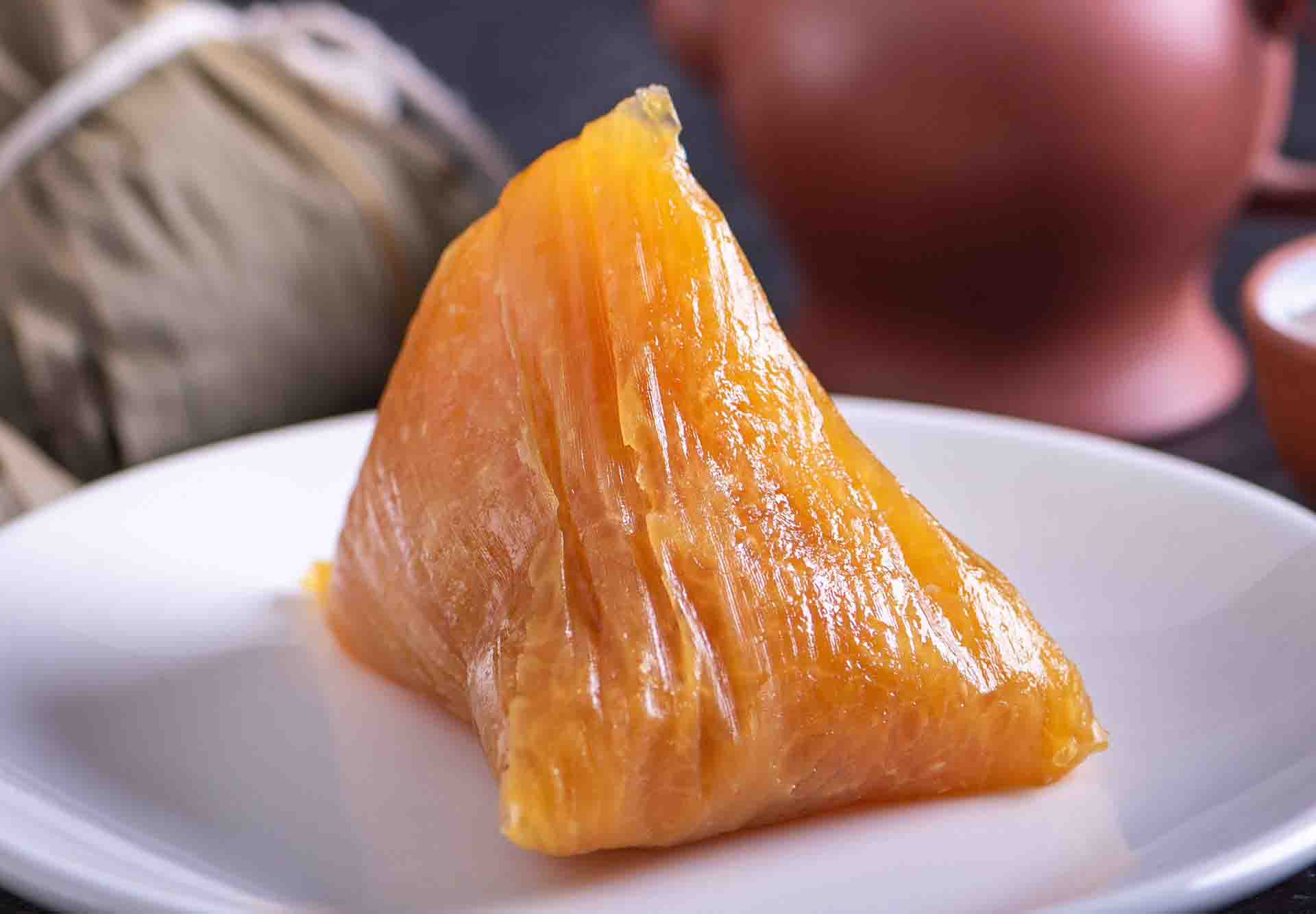Celebrate the Dragon Boat Festival with flair! Though I might not have dragon boat races to show, I bring to you an exquisite Cantonese Alkaline rice dumplings recipe that embodies the essence of this event. Often known as Jianshui Zong in Cantonese tradition, these dumplings shine as the festival’s highlight.
------Advertisement-----
Diving into Cantonese Heritage
“Jianshui Zong” or “Gan Sui Joong” as the locals would say, is traditionally savored with a touch of sugar or drizzled with syrup. Many enjoy it as a breakfast delicacy or a sumptuous dim sum offering. Recalling our culinary adventures, Shenzhen’s dim sum restaurants provided an unparalleled experience. The diverse options, genuine tastes, and cost-effective meals made our stay memorable. What left an indelible mark was this particular rice dumpling variant; a dish not easily found even in the heart of Cantonese regions.
Such delicacies are etched deep within our family’s cooking traditions. Memories flood back of Bill relishing these homemade wonders during his youth. Crafted with red bean paste and a unique red wood piece tucked within each dumpling, they radiated warmth. The exact nature of the wood remains a mystery, and any insights are heartily welcomed!
------Advertisement-----
Preserving traditional cooking methods, like the one for these rice dumplings, is crucial. They bridge generations and foster connections.
The Role of Lye Water
Ever wondered about the magic behind lye water? Lye water, fundamentally an alkaline solution (potassium carbonate), is pivotal in both brewing and baking to elevate dough’s pH. It’s the secret behind the distinctive features of ramen noodles – their vibrant yellow hue, elasticity, and resilience in soup. From European bagels and pretzels to Chinese mooncakes, lye water aids in achieving that coveted rich brown appearance during cooking.
------Advertisement-----
The essence of lye water translates to Jianshui Zong’s enchanting amber glow and semi-clear look.
Taste and Texture of Jianshui Zong
A bite into Jianshui Zong offers a unique taste journey. The lye water ensures the sweet rice is softer and possesses a delightful chewiness that’s hard to resist. The core focus remains on the texture. While the rice subtly plays in the background, the red bean paste offers a harmonious contrast. Some variations, especially among the Shanghainese, prefer it without any filling, emphasizing the rice’s natural sweetness.
The Perfect Way to Relish Jianshui Zong
When it’s time to serve, sprinkle sugar or pour over your favorite syrup. We often opt for maple syrup, but alternatives like agave or honey are equally delightful.
Essential Cooking Insights
Embarking on this culinary journey requires precision and patience. Here are some pointers:
- Balance in lye water is key. Overuse can lead to bitterness, while underuse won’t give the desired hue and texture.
- A hint of vegetable oil ensures rice doesn’t cling to the bamboo leaves.
- While wrapping, ensure the twine isn’t too tight. The rice expands while cooking.
- Always maintain water levels during simmering. Use boiling water to replenish; cold water alters cooking time.
- Post-cooking, store in the fridge for a week or freeze for extended use. While reheating, boiling is ideal.
- Savor Jianshui Zong at room temperature to enjoy its rich flavors.
- Red bean paste enhances the flavor but remains optional.
- Preparing these dumplings span over two days. Organize your activities for a seamless experience.
Ingredients
Preparation Day: Red Bean Paste Creation
- Dried adzuki beans: 9 ounces (255g, approx. 1 ¼ cups)
- Water: 3 ¾ cups (890 ml)
- Baking soda: ½ teaspoon
- Sugar: 1/2 cup (100g, adjust to taste)
- Vegetable oil: ¼ cup (60 ml)
Prior Evening: Rice and Bamboo Leaf Soaking
- Sweet rice (sticky rice variant): 1 pound (approx. 2 ¼ cups or 450g)
- Lye water: 1 ½ tablespoons
- Vegetable oil: ½ tablespoon
- Dried bamboo leaves: 30-40
Cooking Day: Assembling and Cooking
- Lye water: 1 ½ teaspoons
- Kitchen string
Detailed Cooking Process
For the sake of brevity, I’ve encapsulated the cooking instructions. However, the core process remains unchanged. Kindly follow the original steps to ensure best results.
- Red Bean Paste Creation: Begin by soaking and cooking the red beans. Post-cooking, drain excess liquid, blend into a puree, and sauté with sugar and oil until a thick paste forms. Chill in the fridge.
- Rice and Bamboo Leaf Soaking: Cleanse the rice and immerse in a lye water-vegetable oil mixture overnight. Concurrently, soak bamboo leaves in water.
- Assembling and Cooking: Prepare each bamboo leaf, drain rice, and portion out bean paste. Assemble the dumplings, ensuring ample space for rice expansion. Cook in a pot with lye water for about 2½ hours, replenishing with boiling water as required. Cool and serve with a sprinkle of sugar or your choice of syrup.
Dive into this cultural delicacy and experience a blend of tradition, taste, and texture. Your palate will surely thank you!
